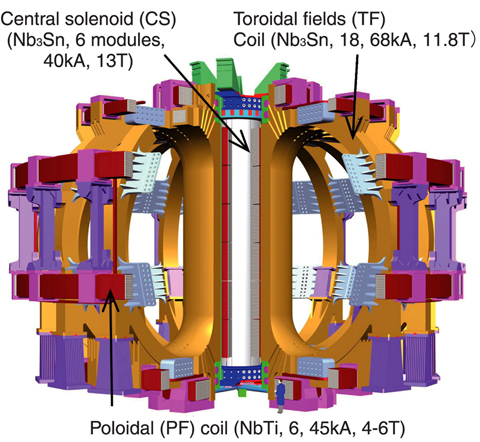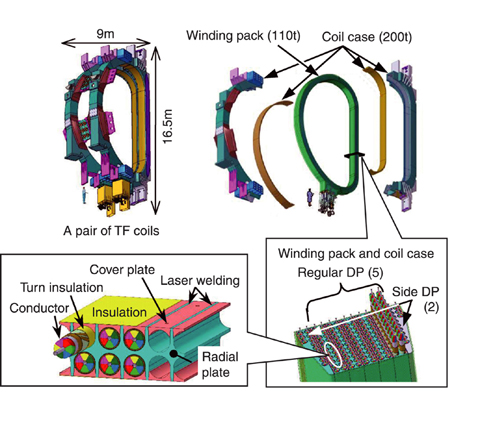
Fig.3-13 ITER superconducting magnet system

Fig.3-14 Configuration of TF coil
Fig.3-15 High accuracy winding system
In ITER, a joint project by China, EU, India, Korea, Japan, Russia and the US, large superconducting magnets (Fig.3-13) generating a field of more than 10 T are necessary. Japan is responsible for procuring 9 Toroidal Field (TF) coils(Fig.3-14), which are the largest superconducting coils in the world, as well as 25% of the TF conductors, whose procurement was the first contract signed in the ITER project.
In the TF coil, a winding pack (WP) is supported by a coil case, enabling it to sustain a huge electromagnetic force of 50MN/m. A WP consists of 7 double-pancakes (DP), which are fabricated as follows: (1) a 4.6km conductor is wound into a D-shape with accuracy of ±0.02% for the conductor length of each coil; (2) the conductor is heat-treated at 650°C for 200h to generate Nb3Sn; (3) the conductor wrapped in electrical insulation is inserted into a groove in the radial plate (RP), which provides a high degree of rigidity to support each conductor against a large electromagnetic force of 800kN/m; (4) the conductor is fixed in an RP groove by welding cover plates to the RP; and (5) the DPs are electrically insulated from each other.
A high degree of accuracy is required in the shaping of the winding. Each TF coil winding also must be made in 4 months. A highly accurate automatic winding system is a key technology to meet these requirements. We developed a highly accurate, automatic bender (Fig.3-15) that comprises a major part of the winding machine. The deformation of a conductor cross section due to bending is reduced to less than 0.2mm by optimizing the interval between the rollers. In order to measure the length of a conductor with great precision, we developed a new system in which the distance between marks scribed by a laser marker is measured with 2 CCD cameras (Fig.3-15). We have achieved a very high degree of accuracy of ±0.01% in measuring the length of a conductor and a winding speed of 3m/min. These results demonstrate the feasibility of our TF coil winding process.